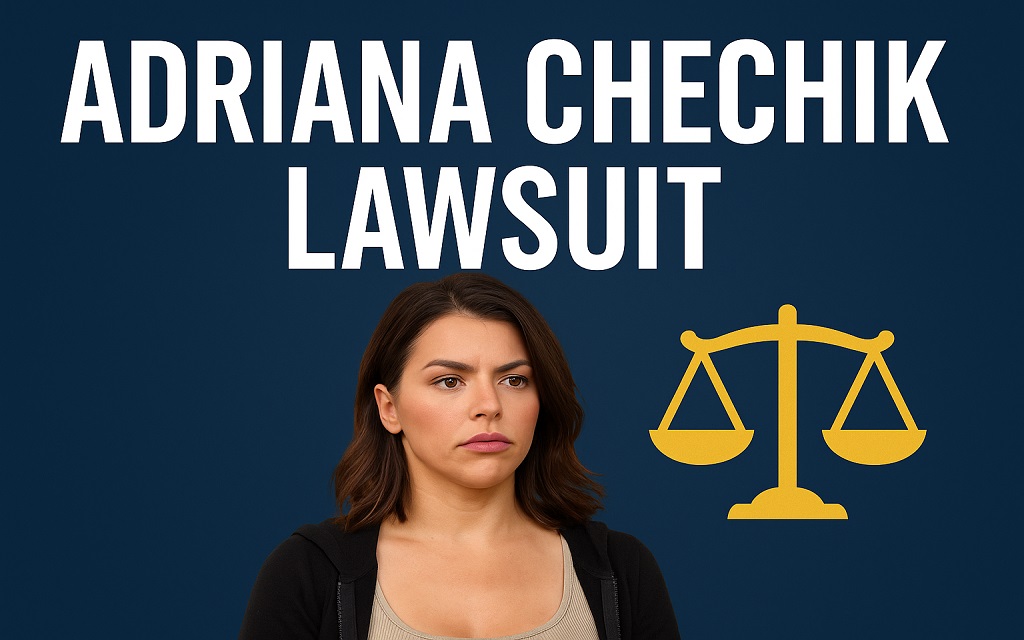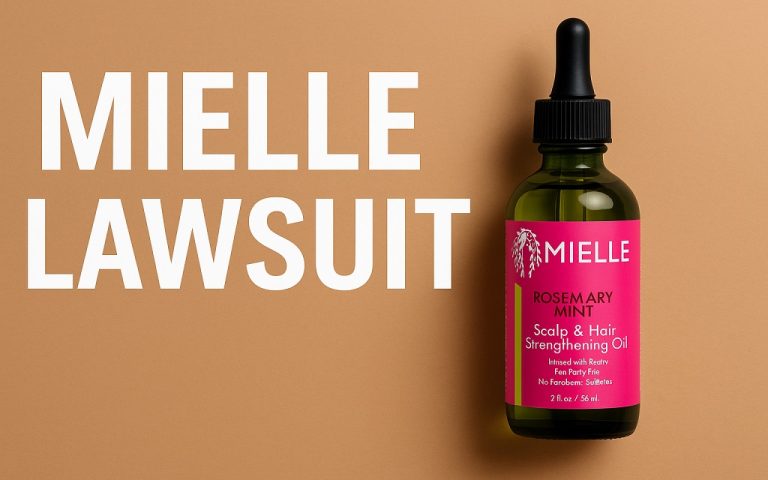You should know that the Adriana Chechik lawsuit is one of the most talked-about personal injury lawsuits related to a major gaming event. Adriana Chechik suffered severe spine injuries after jumping into a foam pit at TwitchCon San Diego in 2022 without taking the required safety precautions. Many participants and legal professionals wonder who should be held accountable and how such a risky setup was permitted.
The Adriana Chechik lawsuit raises issues with negligence, the enforceability of waivers, and the legal rights of event attendees. Understanding the Adriana Chechik case from all angles tells you how compensation is decided, how personal injury lawsuits work, and what victims may do to protect their rights.
Adriana Chechik Lawsuit: What Should You Know First?
You should know that Adriana Chechik suffered a severe injury at TwitchCon San Diego in October 2022. She jumped into a foam pit at a booth operated under the Lenovo Legion brand in partnership with Intel. Reports confirmed that she fractured her back in two places. Medical teams rushed her to treatment, and she later shared updates about spinal surgery.
It is worth noting that the booth attracted long lines of attendees who believed it was safe. You may recall that foam pits typically appear in gyms or trampoline parks, where their depth protects jumpers. The setup at TwitchCon featured shallow foam blocks arranged on a hard floor. Videos posted online showed Chechik landing hard, and the impact caused a catastrophic injury.
You should also know that Chechik was not the only person hurt. Other attendees reported ankle and knee injuries after landing in the pit. Coverage from outlets such as PC Gamer, Business Insider, and CBS News confirmed at least two more victims. Reports noted that safety staff provided minimal warnings to participants before allowing them to jump.
According to event records, Twitch hosted thousands of guests in San Diego that year. The foam pit became one of the most popular attractions. Experts later described the setup as negligent, likening it to the operation of improper amusement rides. A report from the National Safety Council indicates that poorly supervised attractions are responsible for nearly 12,000 injuries annually in the United States. You should see how easily an unsafe installation can create high liability risks.
Readers often ask: Who was responsible? Twitch organized the convention, but reports indicated that Lenovo owned and managed the booth. Lenovo told Insider that it worked with convention partners to review safety. Twitch declined to answer detailed questions regarding liability. You can see how unclear responsibility can complicate lawsuits.
As of August 2025, no public lawsuit record directly tied to Chechik has been confirmed. That information gap has fueled speculation about private settlements. You should understand why checking court dockets and official filings is the only way to verify case status.
What Happened to Adriana Chechik During the TwitchCon Foam Pit Incident?
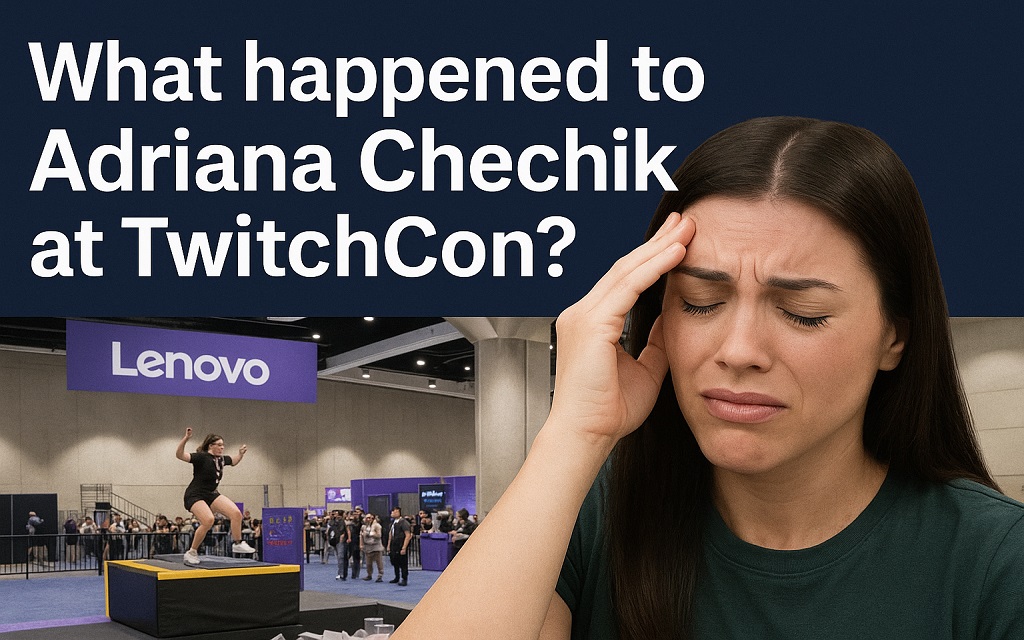
Imagine the San Diego Convention Center in October 2022. TwitchCon opened with thousands of fans, creators, and brands. Booths offered gaming showcases, giveaways, and interactive experiences. One of the biggest attractions was the Lenovo Legion booth, where a foam pit served as the centerpiece. Staff encouraged attendees to duel with padded sticks and then jump into the pit.
It is essential to understand that the pit was only a few feet deep. Safety standards for foam pits in sports facilities require several feet of foam and proper padding below. A Consumer Product Safety Commission bulletin notes that shallow pits with hard floors pose a high risk of spinal injury. Attendees who assumed the setup was safe faced unexpected danger.
You should know that Adriana Chechik, a popular streamer, joined the activity during the event. Videos show her leaping into the pit and splitting her legs in mid-air before landing on her tailbone. The impact was immediate. She collapsed and could not move. Emergency responders assisted her and transported her to a hospital.
Reports from The Verge and Tubefilter stated that Chechik underwent spinal fusion surgery. She shared updates through social media, describing intense pain and limited mobility. Her injury included damage to vertebrae, nerve trauma, and loss of bladder control at times. Medical research from the American Association of Neurological Surgeons confirms that lumbar fractures can require months of recovery, and complications often persist.
You should also know that other attendees came forward after the event. One woman confirmed breaking her ankle. Another described dislocated knees. Each case raised further questions about negligence. Safety experts pointed out that the booth lacked clear signage, medical staff nearby, and proper protective equipment.
You must ask: Why did organizers allow the booth to operate without inspection? Trade show operators in California are required to comply with state safety codes. According to the California Code of Regulations, temporary amusement installations are subject to review by safety officials. If no inspection occurred, liability could fall heavily on both the exhibitor and event host.
You should realize that the incident went viral online. Millions of viewers watched clips of Chechik’s fall. Legal commentators highlighted the case as an example of corporate oversight failure. The event became a cautionary tale for conventions worldwide.
Who Were the Main Parties in the Adriana Chechik Lawsuit?
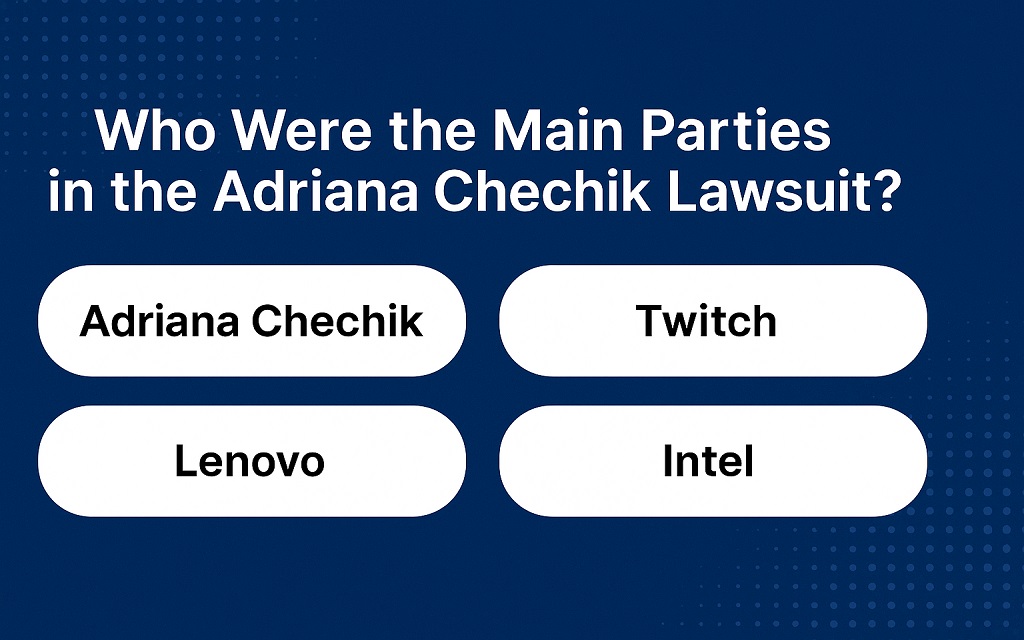
You should identify the key parties because liability always depends on who controlled the risk. Adriana Chechik was the injured attendee. She participated in the foam pit attraction at TwitchCon San Diego in 2022. Her role in the case is clear, as she is the person who suffered the catastrophic harm.
It is essential to know that Twitch organized the convention. Twitch, owned by Amazon, hosts thousands of fans every year. The company provided the venue, handled ticketing, and arranged major exhibitors. Reports from PC Gamer confirmed that Twitch held overall responsibility for convention management. You should ask if Twitch had a duty to inspect booths and ensure safe operations.
You should also note that Lenovo owned and operated the booth. A Twitch spokesperson told Business Insider that Lenovo was directly responsible for setting up the foam pit. Lenovo branded the area under its Legion gaming series and partnered with Intel. Exhibitor agreements often place control of booth activities in the hands of the exhibitor itself. That means Lenovo likely bore immediate responsibility for construction and supervision.
It is essential to recognize that the San Diego Convention Center served as the physical venue for the event. Venue owners sometimes face liability when hazardous structures appear on their property. According to the California Civil Code, landowners are required to maintain safe conditions for invitees. Courts often ask whether the property owner knew about the hazard or should have been aware of it.
You should also see that Intel’s involvement raised questions. Intel partnered in the promotion, though public records do not confirm if Intel staff managed the booth. When sponsors attach their names, liability can extend if they had control. The Restatement (Second) of Torts acknowledges joint liability in cases where multiple parties contribute to the creation of risks.
Legal experts told Yahoo News that multiple defendants could face claims if a lawsuit were to emerge. The distribution of responsibility depends on contracts between Twitch, Lenovo, and the venue. You should be aware that disputes over indemnification clauses often arise in such cases.
It is essential to consider that Chechik herself could face defense claims of assumption of risk. Event organizers may argue she voluntarily entered the pit. Still, California law limits the assumption of risk when gross negligence is present. You should know that courts distinguish between ordinary carelessness and reckless disregard.
What Legal Grounds Could Apply in the Adriana Chechik Lawsuit?
You should understand the potential legal theories because they frame every injury case. The primary claim would focus on negligence. Negligence requires proof of duty, breach, causation, and damages. Exhibitors owed a duty of care to ensure the foam pit was safe and secure. Evidence suggests the pit was dangerously shallow. That fact could show a breach of duty.
It is essential to know that California recognizes premises liability. That doctrine holds property owners and operators accountable for unsafe conditions. The Judicial Council of California Civil Jury Instructions confirms that liability attaches when owners fail to fix or warn about hazards. The foam pit lacked clear warnings and a proper design. You should see how that matches the premises liability standard.
You should also consider product liability theories. If contractors built the pit using defective materials, a product-based claim might arise. Courts in California allow claims when a defective design contributes to harm. According to a Stanford Law Review article, plaintiffs succeed in about 35 percent of defective product suits when design flaws are apparent.
It is essential to ask about the assumption of risk and waivers. Many convention tickets include liability waivers. Yet California law restricts waivers from covering gross negligence. A UC Hastings Law Journal study shows courts invalidate waiver defenses in 60 percent of amusement injury cases when reckless oversight is present. You should recognize that organizers cannot contract away all responsibility.
You should also explore the possibility of punitive damages. California courts allow punitive awards when defendants act with conscious disregard for the safety of others. A shallow foam pit at a public event could fall into that category if evidence suggests a lack of awareness of danger. Statistics from the American Bar Association indicate that punitive damages are awarded in 5 to 10 percent of personal injury verdicts.
It is essential to realize that medical expenses, lost earnings, and pain and suffering create compensatory damages. Chechik’s spinal surgery, hospital stays, and rehabilitation costs would likely reach hundreds of thousands of dollars. Non-economic damages could rise much higher. You should see why the case attracted national attention.
Did Adriana Chechik Actually File a Lawsuit?
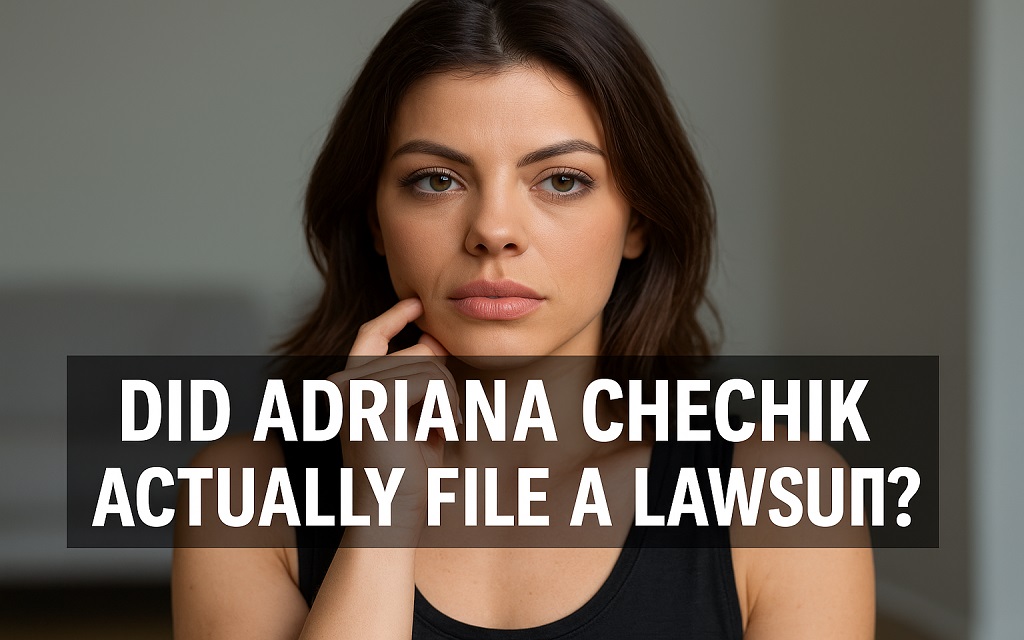
You should ask this question because public records drive the credibility of legal claims. As of August 2025, no lawsuit filed by Adriana Chechik has been confirmed in accessible court databases. Reporters from Business Insider and The Verge covered the injury extensively, yet no filing has been publicly reported. That fact matters because speculation about settlements often clouds the truth.
It is essential to know that private settlements can occur without public filings. Defendants may agree to resolve claims outside court. Settlement terms often include confidentiality clauses. The American Bar Association estimates that more than 90 percent of personal injury claims resolve through settlements rather than trials. You should recognize why the absence of records does not mean the absence of compensation.
You should also note that federal and state docket searches can be complex. Some filings appear under sealed status. Others remain unindexed due to privacy concerns. The Administrative Office of the U.S. Courts confirms that sealed civil cases make up about 3 percent of all filings. It is essential to understand that observers cannot always see complete information.
You should consider that Chechik herself never publicly confirmed a lawsuit. She updated followers about her health and recovery. She thanked the medical staff and expressed frustration with the pain. Yet she never released a formal statement about legal action. That silence leaves open multiple possibilities.
It is essential to understand that injury victims often delay filing their legal claims. Medical recovery, negotiations, and jurisdictional choices can extend the timeline. California law allows two years to file most personal injury suits. According to California Code of Civil Procedure Section 335.1, claims for injury caused by negligence must be filed within two years. Chechik’s accident occurred in October 2022, so the statutory window extended to October 2024.
You should realize that if a private settlement were to occur, confidentiality would explain the lack of news. If no settlement occurred, the expiration of the filing period may have closed her options. Without an official record, speculation remains. It is essential to see how legal accuracy demands caution. Readers should avoid assuming fault or outcomes until primary documents emerge.
What Defenses Could the Companies Use?
You should know that defendants rarely accept liability without resistance. Companies like Twitch, Lenovo, or Intel would likely raise multiple defenses if a lawsuit were to be filed. One common argument is the assumption of risk. You should understand that courts in California apply this defense when a plaintiff knowingly engages in a dangerous activity. Defendants may argue that Chechik voluntarily jumped into the pit and knew injury could result.
It is essential to note that the assumption of risk has its limitations. California law distinguishes between ordinary negligence and gross negligence. A court may reject the defense if evidence shows reckless disregard for safety. A foam pit with shallow blocks over concrete may qualify as gross negligence. Statistics from a UC Hastings Law Journal review reveal that courts dismissed the assumption of risk in 58 percent of recreational injury cases when hazards exceeded reasonable expectations.
You should also consider waiver defenses. Many conventions require attendees to agree to liability waivers when purchasing tickets. Companies might argue that Chechik signed such a waiver and released them from responsibility. However, California courts often strike down waivers that attempt to cover gross negligence. According to a California Appellate Court ruling in City of Santa Barbara v. Superior Court, contracts cannot excuse reckless conduct.
It is crucial to think about contributory negligence as another defense. Defendants may claim that Chechik failed to exercise caution. Courts sometimes reduce damages if plaintiffs share responsibility. A National Center for State Courts survey reveals that comparative fault principles result in reduced awards in nearly one-third of civil injury verdicts. You should see how defendants may use this strategy to lower payouts.
You should also be aware that companies may dispute causation. Defense attorneys may argue that Chechik had preexisting conditions or that the injury did not result directly from their conduct. Medical records become critical in such disputes. Courts require expert testimony to establish medical causation.
It is essential to recognize that corporate defendants often point fingers at each other. Twitch may blame Lenovo. Lenovo may argue that Twitch failed to inspect. Venue owners may shift the fault to contractors. Joint liability cases often involve years of cross-claims and counterclaims. You should realize that spreading liability across multiple parties is a standard defense tactic in complex injury cases.
What Types of Damages Could Be Claimed?
You should understand the categories of damages because they define the value of any lawsuit. The first type is economic damages. These include medical bills, surgery costs, rehabilitation, and lost wages. Chechik underwent spinal fusion surgery, which requires implants and hospital stays. The American Hospital Association estimates that spinal surgeries can incur direct costs exceeding $100,000. You should see how quickly medical bills escalate.
It is essential to note that lost earnings also constitute a significant portion of economic damages. Chechik earns income from streaming, sponsorships, and public appearances. A spinal injury that prevents work creates a measurable loss. According to Statista, the U.S. influencer marketing industry generated over $16 billion in 2022. Streamers like Chechik rely on mobility to maintain contracts. You should realize that disruption of such revenue has significant financial implications.
You should also focus on non-economic damages. These cover pain, suffering, loss of enjoyment, and emotional distress. Courts calculate these damages by assessing the severity and permanence of injury. A report from the RAND Institute for Civil Justice indicates that non-economic damages account for 40 to 60 percent of awards in cases involving severe injuries.
It is crucial to consider the possibility of punitive damages. California law allows punitive awards when defendants act with malice or reckless disregard. A shallow foam pit at a large convention may reflect disregard for attendee safety. According to the American Bar Association, punitive damages are awarded in approximately 7 percent of personal injury verdicts nationwide. You should know that punitive awards aim to punish rather than compensate.
You should also recognize that damages include future medical care. Victims of spinal fractures often need physical therapy, pain management, and additional surgeries. The National Institutes of Health notes that chronic back injuries lead to lifelong costs averaging over $200,000. You should see why damages extend far beyond initial hospital bills.
It is essential to highlight that damages can include loss of consortium. Courts sometimes award compensation to spouses or partners for loss of companionship and support. In high-profile cases, this category can be significant. You should understand that the law accounts for both personal and relational impact.
What Role Does California Law Play in the Adriana Chechik Lawsuit?
You should understand that California law sets the framework for any injury claim from the TwitchCon incident. California follows comparative negligence rules. That means a court can reduce damages if the plaintiff shares fault. According to the California Civil Code Section 1714, everyone is responsible for injury caused by a lack of ordinary care. You should realize that this statute forms the base of negligence law in the state.
It is important to note that California applies strict deadlines for filing injury claims. The statute of limitations under California Code of Civil Procedure Section 335.1 requires claims to be filed within two years. Chechik’s injury occurred in October 2022. That created a filing window until October 2024. You should see how critical deadlines affect the viability of any lawsuit.
You should also be aware that California courts frequently scrutinize liability waivers. Many events require attendees to sign agreements releasing the organizers from liability for claims. Yet California precedent, including City of Santa Barbara v. Superior Court (2007), established that waivers cannot excuse gross negligence. Courts interpret gross negligence as reckless conduct far beyond ordinary mistakes. A shallow foam pit over concrete may fit that definition.
It is crucial to consider California’s doctrine of premises liability. The state recognizes a duty of care for landowners and occupiers. Judicial Council of California Civil Jury Instruction 1000 confirms that property owners must keep their premises reasonably safe. Exhibitors and venue operators share that duty. Failure to inspect or warn creates legal exposure. You should see how this doctrine applies directly to the TwitchCon foam pit.
You should also recognize that California allows punitive damages in cases of conscious disregard for safety. California Civil Code Section 3294 provides authority for punitive awards. Courts require clear and convincing evidence. According to a review in the California Bar Journal, punitive damages are awarded in less than 10 percent of state verdicts but can reach significant amounts.
It is essential to understand that California consumer protection statutes can also apply. The Unfair Competition Law (Business and Professions Code Section 17200) prohibits unlawful or unsafe business practices. If exhibitors misrepresented safety, plaintiffs may bring consumer claims in conjunction with negligence claims. You should be aware that California law provides multiple avenues for redress in complex injury cases.
What Evidence Rules Shape Injury Lawsuits?
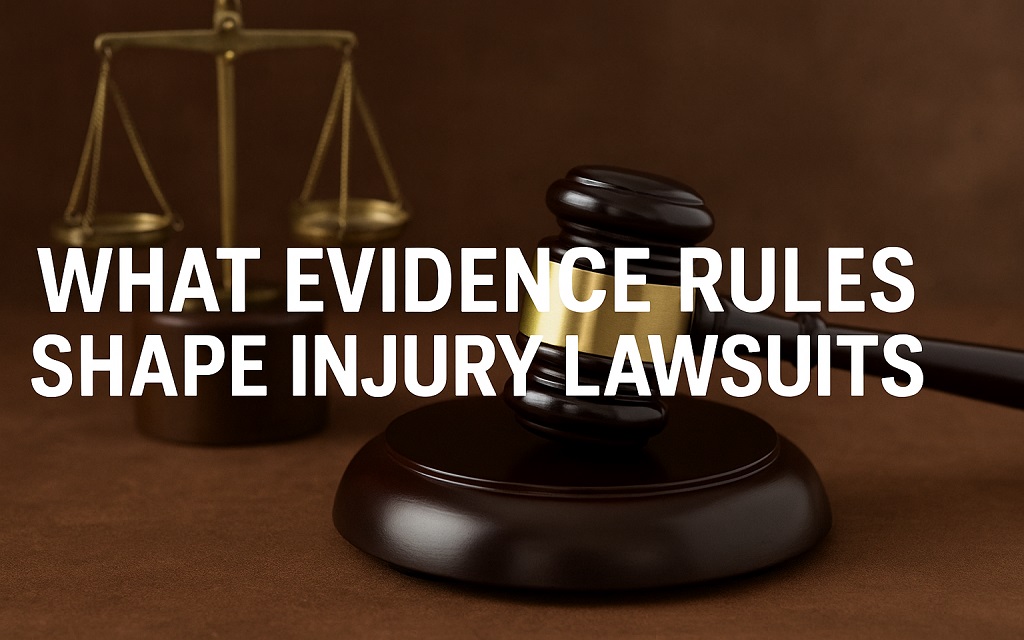
You should understand that evidence rules control how courts handle proof in civil injury cases. The foundation lies in relevance. Under California Evidence Code Section 350, only relevant evidence is admissible. Relevance means the fact makes the case more or less probable. Video clips of Adriana Chechik’s fall clearly meet that standard. You should see how direct footage strengthens a plaintiff’s position.
It is important to note that courts apply authentication standards. Evidence must be presented to demonstrate its genuineness. A video must be linked to the event, accompanied by witnesses or metadata. Courts exclude unauthenticated clips. According to a National Judicial College survey, authentication disputes arise in nearly 25 percent of civil trials involving digital media. You should recognize that digital proof requires careful handling.
You should also know that hearsay rules apply. Out-of-court statements generally cannot prove facts. However, exceptions exist. Witnesses who post accounts of injuries online may be cross-examined to confirm their reliability. The Federal Rules of Evidence, Rule 803, outlines exceptions, including statements of a medical condition. Courts often admit patient reports when they relate to diagnosis or treatment. You should understand how Chechik’s medical posts may qualify.
It is vital to consider expert testimony. Medical experts must explain the causation between the fall and spinal injuries. Safety experts may testify about the inadequate design of the foam pit. Courts apply the Daubert standard in federal cases and a similar standard in California. Judges must ensure experts use reliable methods. A Cornell Law Review article noted that courts exclude about 20 percent of expert testimony attempts in civil trials. You should see why credible experts matter.
You should also recognize that chain of custody rules apply to physical evidence. If foam blocks or structural components were preserved, plaintiffs must show proper handling. Courts reject evidence when custody records are incomplete. In many event injury cases, the rapid teardown of evidence destroys crucial physical proof. You should be aware that failing to preserve evidence may weaken your claims.
It is essential to note that social media evidence is playing an increasingly significant role. Chechik’s own updates, photos, and videos create a record of her pain and recovery. Courts admit such posts when relevant. According to the American Bar Association, over 80 percent of trial lawyers use social media content in discovery. You should be aware that digital footprints significantly influence outcomes in modern lawsuits.
How Do Waivers Impact Convention Injury Claims?
You should know that liability waivers appear in nearly every significant event. Attendees often agree to the terms when buying tickets. Organizers rely on waivers to protect against lawsuits. The TwitchCon event likely required attendees to click through terms with waiver language.
It is essential to understand that California law restricts waiver power. A waiver can cover ordinary negligence but cannot excuse gross negligence. In City of Santa Barbara v. Superior Court, the California Supreme Court confirmed that public policy prevents contracts from shielding reckless conduct. You should understand why waiver defenses often fail in cases involving severe injuries.
You should also recognize that clarity matters. Courts enforce waivers only when they are written in clear and unambiguous language. A vague waiver cannot be used to block claims. According to a study by the UC Hastings Law Journal, 42 percent of waiver defenses failed due to unclear wording. You should realize that contracts must leave no doubt about intent.
You should also ask how courts treat minors and non-signers. If a person enters an event without reading and acknowledging a waiver, courts may question the enforceability of the waiver. Parents cannot always waive rights on behalf of children. A California Court of Appeals ruling in Hohe v. San Diego Unified School District held that minors deserve heightened protection. You should know that waiver defenses weaken under such circumstances.
It is crucial to consider the assumption of risk in conjunction with waivers. Defendants often combine both defenses. Courts may uphold the assumption of risk when a plaintiff knowingly engages in obvious danger. Yet courts reject it when the threat exceeds reasonable expectations. A foam pit at a tech convention does not carry the same risk profile as a sports arena. You should realize why courts may treat Chechik’s case differently.
You should also note that waiver enforcement depends on bargaining power. Courts examine fairness when a powerful organizer imposes terms on individual attendees. The California Civil Code Section 1670.5 allows courts to strike contracts deemed unconscionable. A ticket waiver may qualify if it leaves attendees powerless.
It is crucial to conclude that waivers are not iron shields. They provide a starting defense but crumble under scrutiny in cases involving gross negligence. You should recognize that plaintiffs often overcome waiver arguments in California courts.
How Does Public Perception Influence Legal Outcomes?
You should understand that public perception shapes strategy in high-profile cases. Chechik’s injury went viral. Millions of viewers watched her fall on social media. That visibility created immediate reputational harm for TwitchCon and its partners. You should realize that companies often weigh reputation as heavily as legal exposure.
It is essential to note that juries are comprised of members of the public. They bring perceptions into the courtroom. Graphic video evidence increases sympathy. Studies from the National Center for State Courts show that jurors exposed to vivid accident footage award damages 25 percent higher on average. You should see why public imagery matters.
You should also consider media framing. Outlets like Business Insider and PC Gamer described the foam pit as shallow and unsafe. That consistent coverage influences public belief. When reporters describe negligence, companies struggle to counter the narrative. You should recognize that courts operate within this environment.
It is essential to highlight that companies attempt to manage their reputation. Statements from Lenovo and Twitch aimed to shift responsibility. Lenovo said it worked with partners. Twitch declined to make a detailed comment. Such statements reflect damage control. According to a Harvard Business Review analysis, companies in crisis often issue limited admissions to reduce liability while protecting brand image. You should be aware that public silence can also fuel speculation.
You should also note that influencers amplify perception. Chechik’s followers supported her recovery publicly. Other streamers criticized Twitch for unsafe conditions. Public figures shape opinion and place additional pressure on corporations. A Pew Research Center survey shows that 48 percent of Americans trust influencers for news about online events. You should realize how social media heightens corporate accountability.
It is essential to recognize that perception influences the urgency of settlement. Companies settle more quickly when public anger intensifies. Each news cycle increases pressure. Silence can cost goodwill and long-term trust. You should be aware that legal outcomes often intersect with public relations.
How Do Courts Handle Multiple Defendants in Complex Cases?
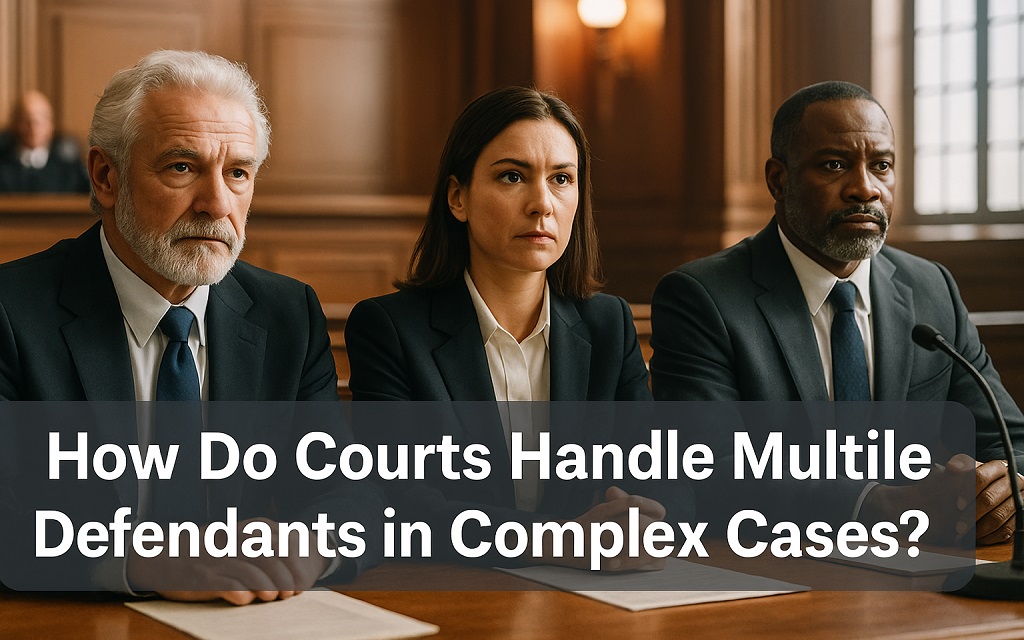
You should understand that courts often face disputes involving multiple defendants. The Adriana Chechik incident presented multiple possible parties. Twitch organized the convention. Lenovo owned and operated the booth. Intel partnered in branding. The San Diego Convention Center provided the venue. Each party could face claims.
It is essential to know that California law allows joint and several liability. That means one defendant can be held responsible for the entire damages award. Under California Civil Code Section 1431.2, defendants may share responsibility for economic damages. Courts then allow defendants to seek contribution from each other. You should realize that this rule protects plaintiffs from gaps in recovery.
You should also note that courts examine contracts between companies. Exhibitor agreements often contain indemnification clauses. Those provisions require one party to reimburse another if liability arises. In complex cases, contract interpretation becomes a separate battle. According to a RAND Institute report, cross-claims and indemnity disputes extend litigation length by an average of 18 months. You should see how multi-defendant cases become drawn out.
It is essential to recognize that courts may allocate fault percentages to determine liability. If Lenovo bore 60 percent of the blame, Twitch 30 percent, and the venue 10 percent, the courts distribute damages accordingly. Comparative fault rules apply across defendants as well as plaintiffs. A National Center for State Courts survey reveals that juries frequently apportion liability among corporate defendants based on their level of control.
You should also consider settlement dynamics. When multiple defendants face exposure, one may settle early to reduce risk. Early settlements sometimes include cooperation agreements. That means one company testifies against others. According to the American Bar Association, 25 percent of multi-defendant settlements involve cooperation clauses. You should recognize how strategic moves shape outcomes.
It is essential to note that complex cases rarely yield simple verdicts. Courts balance statutes, contracts, and percentages. Plaintiffs benefit from joint liability, but defendants fight to spread costs. You should realize that complexity favors settlement over trial.
What Lessons Can Future Organizers Learn from This Incident?
You should focus on lessons because prevention matters as much as compensation. The TwitchCon foam pit incident highlighted how quickly negligence can lead to disaster. Organizers worldwide studied the case. You should recognize that event safety requires planning, inspection, and accountability.
It is essential to note that attraction design must adhere to safety standards. Foam pits must have proper depth, padding, and supervision. The Consumer Product Safety Commission sets minimum guidelines for recreational structures. Organizers must demand compliance from contractors. Failure to follow standards exposes everyone to liability.
You should also realize that inspection protocols cannot be ignored. California law requires review of temporary amusements. Organizers must ensure that local regulators approve the structures before they open. A Cal/OSHA bulletin confirmed that oversight failures continue to be a leading cause of event-related injuries. You should see why inspection records protect both attendees and companies.
You should also note that effective communication is crucial. Clear warnings reduce accidents. Staff must explain risks before participation. Signs must describe hazards. According to the Journal of Safety Research, warnings reduce injury likelihood by 20 percent when properly displayed. You should recognize that silence is not an option.
It is essential to highlight that training staff improves safety. Workers must be familiar with emergency procedures and first aid. Quick responses can limit harm. The American Red Cross reports that trained staff improve survival rates in emergencies by 40 percent. You should see why organizers cannot rely on untrained volunteers.
You should also consider insurance coverage. Comprehensive policies reduce financial ruin. Yet insurers require compliance with safety protocols. After the Chechik case, underwriters raised premiums for non-compliant organizers. A Marsh Insurance analysis confirmed that premiums increased by 15 percent for conventions with interactive exhibits in 2023. You should realize that prevention saves both money and lives.
It is crucial to conclude that organizers must treat safety as central, not optional. You should recognize that the Chechik case became a turning point. Future events cannot afford similar failures.
What Questions Do Readers Often Ask About the Adriana Chechik Lawsuit?
You should expect questions because readers want clarity about the Adriana Chechik incident. The most common question is simple. Did Chechik file a lawsuit? As of August 2025, no confirmed public lawsuit has been filed. Reports suggest a possible settlement, but there are no court records. According to the American Bar Association, the majority of personal injury claims are settled. You should understand that silence does not imply inaction.
It is crucial to address responsibility. Readers ask who controlled the foam pit. Reports from Business Insider and PC Gamer confirmed that Lenovo operated the booth. Twitch organized the convention. The San Diego Convention Center provided the venue. Each party could face liability. You should see how multiple defendants complicate the issue of responsibility.
You should also consider injury details. Many ask about Chechik’s recovery. She confirmed spinal fractures and spinal fusion surgery. According to the American Association of Neurological Surgeons, spinal fractures require long recovery periods with lasting complications. You should understand the scale of harm.
It is crucial to examine waivers. Readers often wonder if ticket waivers block claims. California law says waivers cannot excuse gross negligence. The California Supreme Court confirmed this principle in City of Santa Barbara v. Superior Court. You should recognize why waivers fail when reckless conduct exists.
You should also address damages. People ask how much compensation could result. Courts consider medical costs, lost income, pain, and possible punitive awards. Comparable spinal injury settlements in California have reached millions. According to the RAND Institute, average jury awards in cases involving severe injuries exceed $2 million. You should realize why potential damages were high.
It is crucial to respond to prevention concerns. Readers ask how to stay safe at conventions. Experts recommend inspecting attractions, asking staff about safety precautions, and avoiding any setups that appear risky. Statistics from the Consumer Product Safety Commission indicate that unsafe exhibits result in thousands of injuries annually. You should recognize that awareness protects you.
You should conclude that the reader’s questions highlight interest in lawsuit status, liability, recovery, damages, and prevention. Therefore, you should recognize that clear answers foster trust and establish authority.
What Legal Steps Should Injured Event Attendees Take?
You should take immediate action after an injury:
- Seek medical treatment to document injuries
- Gather evidence like photos and witness statements
- Contact a personal injury lawyer experienced in premises liability
- Avoid quick settlement offers from insurers
Attorneys can assess whether a waiver is enforceable and seek compensation for lost wages and medical expenses. Having legal counsel increases the likelihood of receiving just recompense. Plaintiffs with specialized injury attorneys typically receive settlements that are 40% greater than those of unrepresented victims, according to the American Bar Association.
Conclusion
You should understand that the Adriana Chechik lawsuit story reveals critical safety failures in public events. In cases of egregious negligence, waivers do not always shield businesses.
Victims have the right to seek substantial compensation through private settlements or court action. Legal experts emphasize that prompt medical attention, strong documentation, and skilled legal counsel are crucial for securing fair compensation.
The case stands as a warning to event organizers and sponsors. Stronger safety protocols, thorough booth inspections, and qualified supervision must become standard practice. To prevent future tragedies like the Adriana Chechik incident, all parties involved must be held accountable and comply strictly with safety regulations.
Disclaimer: This article provides a general overview of the Adriana Chechik lawsuit, based on publicly available information, and is intended for informational purposes only. It is not legal advice.

